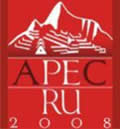United Kingdom
| Welcome |
| Peru in Brief |
| History |
| Geography |
| Government & Politics |
| Maritime delimitation between Peru and Chile |
| News |
Links |
| FOREIGN DIRECT INVESTMENT AND CAPITAL FLOWS | ||
The increase of foreign direct investment produced a positive balance in the capital account in 1993 and 1994, but a later deficit in the trade balance and the fall of private investment flows produced a new déficit in the 1995 balance of payments. This changed to a superavit with the recovery of investment flows and the slowing of imports in 1995 and 1996, although the low levels of foreign direct investment between 1998 and 2001, added to the political climate generated a new period of deficit. The increase in confidence by investors in 2002 after the Camisea Project and new big mining operations allowed the balance of payments to recover from that year. |
||
Peru has a liberal regime for foreign investment. There are no restrictions and foreign investors get the same treatment than locals. The rights include free remittances of dividend, capital, royalties and benefits after taxes, commercial transfers, tax stability contracts, fixed rate for 10 years and a minimum commitment of US$ 2, a 10% royalty and absence of taxes to dividends. Additionally Peru is a member of MIGA, ICSID and OPIC and has bilateral agreements with twelve countries, mainly in Europe and Asia . |
||
Foreign investment grew strongly since 1992, especially in telecommunications and mining. Between 1990 and 1999 nearly 30% of flows came from Spain , 21% from US and 15% from the UK . 80% of the Spanish investment went to Telefónica del Perú . The US focused on energy and mining –60% of fluxes from 1990 to 1999–, while the UK did mining (40%). |
||
Investment fell from US$ 2.4 billion in 1999 to US$ 680 million in 2000, after the reelection process. The recovery began in 2001 when it surpassed US$ 1 billion and continued in 2002 with US$ 2.4 billion and 2004 with US$ 1.4 billion. |
||
| <BACK> |





